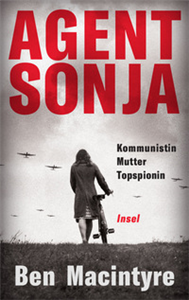My Father's Secret
The BND, my family and I
by Corinna von Bassewitz
For a long time, Corinna von Bassewitz believed her father was a soldier, later on that he was a diplomat. Then, at the age of 16, she learnt something unbelievable: he had been a secret agent for the Bundesnachrichtendienst (BND, Germany's Federal Intelligence Service). Once the secret had been at least partly uncovered, she became something of a spy herself and eventually found some confidential documents in her parents' attic. Later, she realised that her father had been living as a double agent for the FRG and the GDR. So what effect does it have on a girl if her father conceals his true identity and eventually disappears without trace? Along with her family history, the author provides multi-layered and exciting insights into the historical context of the Cold War. A very personal book, intriguingly told and emotionally touching.






























